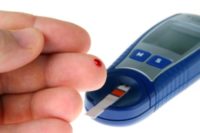 The American College of Occupational and Environmental Medicine (ACOEM) has announced a yearlong awareness-building campaign intended to help employers identify and respond to chronic diseases that commonly impact worker health and productivity.
The American College of Occupational and Environmental Medicine (ACOEM) has announced a yearlong awareness-building campaign intended to help employers identify and respond to chronic diseases that commonly impact worker health and productivity.
The campaign, which is aimed at conditions such as diabetes, hypertension, and cardiovascular disease, will involve ACOEM providing tools and resources to help employers determine the true costs and impact of specific chronic diseases among their employees — beginning with its newly expanded Blueprint for Health, a free on-line calculator that helps estimate the overall total health-related expenses.
ACOEM will also periodically provide basic facts and strategies for employers on specific diseases during the upcoming year at its web site and in its publication, the Journal of Occupational and Environmental Medicine (JOEM), while providing links to a wide variety of other resources. In addition, the first of the Blueprint’s chronic-disease informational packages — on chronic obstructive pulmonary disease (COPD) — will be available later this fall.
“Chronic disease is one of the most damaging health issues to health and productivity — but at the same time, there are many tools and strategies that employers can use to stay ahead of it," said Barry Eisenberg, CAE, executive director of ACOEM. "ACOEM is committed to helping employers gain access to this information.”
The Blueprint for Health will serve as the centerpiece of the campaign, Eisenberg said. Introduced by ACOEM in 2007 in partnership with the HCMS Group, the Blueprint for Health allows employers to enter demographic information on their employee population into an on-line estimating tool and receive information that calculates the health and productivity impacts from these diseases on their workforce. The Blueprint for Health has been recently expanded and updated, with new information about COPD, in addition to other specific chronic diseases, such as diabetes and hypertension.
“An understanding of the total costs of chronic disease and the benefits of good health can help employers of all sizes make better decisions that can improve the overall health of their employee population and improve the business performance of their companies,” Eisenberg said. “Our expansions and improvements to the Blueprint for Health make this tool more useful than ever for employers.”
“The Blueprint is the only such tool that goes beyond estimates and allows employers to see distributions of cost, time absent from work, and productivity, as well as the ability to estimate the migration of employees in and out of high disease-risk status,” added Nathan Kleinman, PhD, Director of Research Services for HCMS Group. “This allows for more targeted interventions offered to the employees who need help the most.”
Eisenberg said the informational campaign is the latest in ACOEM’s wide-ranging Healthy Workforce Now (HWN) initiative, which was launched in 2009 to build a healthier workforce and integrate workplace health and wellness more effectively with the nation’s overall health reform efforts. Healthy Workforce Now advances such action items as establishing a new “national culture of health in the workplace,” better access to health care services for workers, a reduction in workplace health disparities, improvements aimed at the workers’ compensation system and a stronger national response to environmental health risks.
“ACOEM believes that the workplace is a critical location for achieving our overall health goals as a nation,” Eisenberg said. “The workplace offers unique resources and infrastructure for addressing both individual and population health.”
“The occupational physicians who make up ACOEM’s membership are at the forefront of worksite wellness and population health management,” he said. “For our national health efforts to succeed, we believe they have a vital role to play.”
To learn more about ACOEM’s campaign, the Blueprint for Health, or the Healthy Workforce Now initiative, visit www.acoem.org.
ACOEM campaign to help companies address chronic disease among workers


